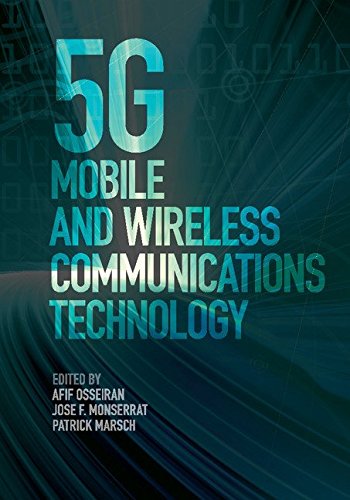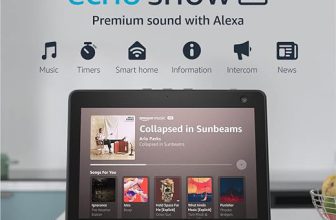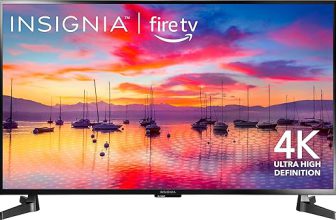
As technology continues to evolve, the way we experience virtual reality (VR) is undergoing a profound transformation. Many of us have felt the frustration of lag or buffering while trying to immerse ourselves in a virtual world, which can diminish the excitement and engagement of VR experiences. In this blog post, I want to explore how 5G technology addresses these challenges and enhances our interactions with VR. With its remarkable speed and low latency, 5G has the potential to change the game for users and developers alike, making virtual reality more immersive and accessible than ever before. Join me as I delve into the specific ways 5G is set to revolutionize our VR experiences.



Understanding 5G Technology
5G technology, the fifth generation of mobile networks, represents a significant leap forward in telecommunications. This section explores its key features, how it differentiates itself from previous generations, and its potential applications, particularly in virtual reality.



Key Features of 5G Technology
5G technology is defined by several groundbreaking features that enhance connectivity and user experience. Here are the most significant characteristics:
Ultra-Reliable Low Latency
One of the standout features of 5G technology is its ultra-reliable low latency. This means that the time it takes for data to travel from one point to another is drastically reduced, often to as low as 1 millisecond. This level of performance is essential for applications that require real-time interaction, such as:
- Remote Surgery: Surgeons can perform operations on patients from thousands of miles away with minimal delay, using devices like the Da Vinci Surgical System.
- Autonomous Vehicles: Companies like Tesla and Waymo rely on real-time data to navigate and make decisions on the road, a process that benefits greatly from low latency.
Increased Bandwidth
5G networks offer significantly greater bandwidth compared to previous generations like 4G LTE. This increased capacity allows for more data to be transmitted simultaneously, leading to faster download and upload speeds. For example:
- Streaming Services: Platforms like Netflix and YouTube can deliver high-definition content seamlessly, even in crowded environments, thanks to 5G’s higher bandwidth.
- Online Gaming: Gamers using platforms like Xbox Cloud Gaming or PlayStation Now can enjoy low-latency, high-quality gaming experiences without interruptions.
Massive Device Connectivity
Another impressive feature of 5G is its ability to connect a vast number of devices simultaneously. This characteristic is crucial in an increasingly connected world, supporting the Internet of Things (IoT). Some practical examples include:
- Smart Cities: In cities like Barcelona, 5G networks enable thousands of sensors to monitor traffic, pollution, and energy use, leading to more efficient urban management.
- Wearable Technology: Devices such as the Apple Watch Series 8 can stay connected even when away from your phone, allowing for real-time health monitoring and notifications.
Comparison of 5G with Previous Generations
| Feature | 4G LTE | 5G |
|---|---|---|
| Latency | 30-50 milliseconds | 1 millisecond |
| Bandwidth | Up to 1 Gbps | Up to 10 Gbps |
| Device Connectivity | Thousands of devices | Millions of devices |
| Use Cases | Streaming, Browsing | IoT, AR/VR, Remote Surgery |
| Network Type | Primarily Mobile | Mobile + Fixed Wireless |
Applications in Virtual Reality
As 5G technology continues to roll out, its impact on virtual reality (VR) is particularly noteworthy. The combination of low latency, high bandwidth, and extensive connectivity makes 5G an ideal platform for immersive experiences. Here are some applications:
Enhanced Gaming Experience
5G enables cloud-based VR gaming, allowing users to play high-fidelity games without the need for expensive hardware. For instance, Oculus Quest 2 users can access VR content and gaming with cloud streaming services like Vortex Gaming or Shadow, enhancing the overall experience.
Collaborative Virtual Environments
In industries like education and training, 5G facilitates real-time collaboration in virtual environments. Platforms like Spatial allow users to meet in a shared virtual space, regardless of their physical location, making remote teamwork more effective and engaging.
Virtual Events and Concerts
5G can transform how we experience events, enabling seamless streaming of concerts and conferences in virtual reality. Brands like Wave have already started hosting virtual concerts that allow fans to interact in real-time, creating an immersive experience that was not possible with earlier technologies.
5G technology is setting the stage for innovative applications across various sectors, particularly in enhancing virtual reality experiences. Its unique features and capabilities not only improve connectivity but also open up new possibilities for how we engage with the digital world.
Enhanced Streaming and Graphics Quality
The advent of 5G technology is revolutionizing the way we experience virtual reality (VR) content. With its unprecedented speed and reliability, 5G significantly minimizes lag and buffering issues, transforming the landscape of high-quality streaming. In this section, we will delve into the technical aspects of data transmission and bandwidth, illustrating how they contribute to improved graphics rendering, resulting in a more lifelike and immersive VR experience.



Technical Aspects of 5G Data Transmission
5G networks utilize higher frequency bands, which provide a substantial increase in bandwidth compared to the previous 4G networks. This increased bandwidth is crucial for streaming high-definition VR content, as it allows for the transmission of large amounts of data in real-time. Here are some key technical benefits of 5G:
- Low Latency: 5G can achieve latency as low as 1 millisecond, drastically reducing the delay between user actions and the VR environment’s response. This is particularly important in VR, where even minor delays can break immersion.
- Higher Data Rates: 5G technologies can deliver data rates of up to 10 Gbps. This means that high-resolution graphics, 3D audio, and complex environments can be streamed without compromising quality.
- Network Slicing: 5G supports network slicing, which allows the creation of virtual networks optimized for specific applications. VR applications can benefit from dedicated bandwidth, ensuring consistent performance even during peak usage times.
Enhanced Graphics Rendering
With the increased bandwidth provided by 5G, VR developers can enhance graphics rendering, offering users a much more immersive experience. Here’s how:
- High-Resolution Textures: 5G allows for the streaming of high-resolution textures, which can significantly improve the visual quality of VR environments. For example, Oculus Quest 2 users can experience sharper images and more detailed landscapes when connected to a 5G network.
- Real-Time Updates: The ability to receive real-time updates means that dynamic environments can change instantaneously, adding to the realism. Games like “Blade and Sorcery” can incorporate real-time physics and environmental changes, providing an engaging gameplay experience.
- Complex Models: With 5G, developers can integrate more complex models into their VR applications, resulting in intricate designs that would be impractical with slower connections. Titles like “Half-Life: Alyx” can leverage these advancements to create more interactive and detailed worlds.
Practical Examples of VR Applications Benefiting from 5G
Several VR applications have already started to embrace the benefits of 5G for enhanced streaming and graphics quality. Below are some noteworthy examples:
- HTC Vive XR Elite: This VR headset can leverage 5G for seamless experiences in games like “VRChat,” where users can interact in expansive virtual environments without lag.
- Samsung Odyssey+: Utilizing 5G, this headset can enhance streaming capabilities for applications like “Bigscreen,” allowing users to watch movies together in virtual theaters with high-definition quality.
- Meta Quest Pro: This high-end VR headset benefits from 5G for experiences in “Horizon Worlds,” where users can create and explore detailed worlds with minimal latency.
Benefits of Enhanced Streaming and Graphics Quality
The improvements brought about by 5G technology will not just enhance existing VR applications but also open up new possibilities in the realm of virtual experiences. Here’s a breakdown of key benefits:
| Benefit | Description |
|---|---|
| Reduced Lag | Minimal delay enhances responsiveness and control in VR. |
| Higher Resolution | Streaming of high-definition content leads to better visuals. |
| Improved User Experience | Real-time updates create a dynamic and engaging environment. |
| Increased Interactivity | Complex models and environments allow for richer interactions. |
| Broader Accessibility | 5G enables VR experiences in diverse locations, enhancing mobility. |
With these advancements, users can look forward to a future where virtual reality is not just a technological novelty but a fully immersive experience that feels as real as the physical world. As 5G continues to expand, we can expect even greater innovations in VR content and applications.
Unlocking New Dimensions in VR Through 5G Connectivity
In conclusion, 5G technology is set to transform virtual reality experiences by significantly enhancing streaming quality, increasing interactivity, and opening up new possibilities for immersive environments. As 5G becomes more widely available, I encourage both users and developers to embrace this innovation. By exploring the full potential of 5G, we can elevate our virtual reality experiences to unprecedented levels, paving the way for a more engaging and dynamic future in VR.







Can you recommend any good articles or resources for learning more about the future of 5G and VR? I’m super curious! 📚
Sure thing! I’ll compile a list of resources and share them in my next post. Stay tuned!
Great point! AR definitely has a lot of potential with 5G as well. I’ll make sure to include that in the next article! Thanks for the suggestion!
I saw a demo of 5G-powered VR at a trade show, and it was insane! They used it for remote surgery simulations. Can you believe that? 🏥
Wow, that’s a fantastic example of real-world application! It’s amazing how 5G is pushing the boundaries. Thanks for sharing that story!
Hey, can you dive deeper into how 5G is going to change AR experiences too? Seems like VR and AR go hand in hand! 🔗
I’d love to hear more about specific devices that are leveraging 5G for VR, like the Meta Quest 3. Any insights on that?
Absolutely! The Meta Quest 3 is a fantastic example. I’ll add more details on that and other devices in an upcoming piece!
This is super interesting! I recently tried out the Oculus Quest 2 over 5G, and the graphics blew my mind! It really enhanced the gaming experience. 🎮
That’s awesome to hear! The difference that 5G makes is really significant. Thanks for sharing your experience!